OCCUPY CENTRAL - DAY 26: Full coverage of the day’s events
Suspected arson attack follows clashes at Mong Kok Occupy zone
PUBLISHED : Wednesday, 22 October, 2014, 3:14pm
UPDATED : Thursday, 23 October, 2014, 11:25am
Scuffles break out between Occupy protesters and opponents in Mong Kok. Photo: Sam Tsang
Tensions and violence at the Occupy Central sit-in rally site in Mong Kong escalated yesterday as opponents attempted to remove barriers set up by the protesters, followed by a man’s attempt to set fire to their supplies.
Later, fresh scuffles broke out, with protesters clashing with their opponents at various corners of the protest zone. And as a public forum got under way, four bags of what was suspected to be faeces and oil tumbled down onto the audience from a building above.
A total of seven arrests were made.
The alleged arson attempt took place at about 6.45pm, when a middle-aged man turned up with a bag full of flammable substances. Witnesses said he threw three glass jars of thinner at protesters standing near a supply station and whipped out a lighter, but failed to set the supplies ablaze. Protesters overpowered the man and detained him until police arrived.
One fire engine was dispatched.
“The man looks about 50 years old and was carrying a rucksack,” a witness said. “He approached the crowds and suddenly dumped two bottles to the ground near a pile of the protesters’ supplies and materials, and shouted, ‘Burn you all to death.’
“The people quickly pushed him to the ground and subdued him. Police later came.”
Other witnesses said they did not hear the man say anything.
“We surrounded him and grabbed the lighter from his hand,” protester Lam Shing-tong, who also got the fluid on his clothes, said.
“We kept shouting ‘someone’s trying to set fire’ but police ignored us. They came after 10 minutes. We could have all been set on fire.”
Another witness said the man had tried to pull more bottles out from a brown leather backpack.
"The suspect then mysteriously collapsed on the floor and was taken away in an ambulance," said witness Wing Ngan. "I don’t understand why it took so long for police to react."
Glass splinters littered the scene as a strong stench of thinner hung in the air. The supplies were moved elsewhere for safety.
Earlier in the day, taxi drivers started tearing down barriers on Nathan Road but were stopped by police. The major thoroughfare remained closed to traffic.
The incident began when members of the Taxi Drivers and Operators Association arrived at the Dundas Street end of the Nathan Road blockade with a bailiff’s order granted by a court courts this week to clear the Mong Kok protest site.
The group ripped up rubbish bins, fences, wooden pallets and bamboo poles, and loaded the materials onto a truck with a crane.
Angry demonstrators defended their barricades by sitting on them or putting their arms over them. Scores of police officers carrying shields formed a line to separate the two groups as tensions rose. Police urged everyone to stay calm and not to resort to violence.
“We have the ability to [remove all the barriers] but police said it would cause chaos,” Eddie Ng Yip-pui, director general of the association, said.
Ng said he and his fellow drivers would ask a court on Friday to extend the injunction. He did not rule out action on a “bigger scale” should such a court order be granted.
The taxi drivers’ group and a minibus operators’ group received court injunctions on Monday to disperse the Mong Kok crowds. A third order was granted to Goldon Investment, owner of Citic Tower, near government headquarters in Admiralty.
That injunction also failed to stop student protesters from thwarting an attempt to clear their barricades, on Lung Wui Road. About 20 staff members from Citic Tower staff met with opposition as they tried to remove the barriers.
The students ignored a warning that they were in contempt of court from a representative of Citic’s legal department and a plea to clear the barricades because they were blocking a fire escape route.
Students were later seen reinforcing barricades in front of the entrance to Citic Tower on Tim Mei Avenue, which had been taken down on Tuesday.
Yesterday also saw the injunction bids extended to Harcourt Road. Kwoon Chung Bus, Public Omnibus Operators Association, and the China Hong Kong and Macau Boundary Crossing Bus Association have applied to the courts for an injunction to remove barriers between 16 and 18 Harcourt Road, Admiralty, outside Far East Finance Centre.
Kwoon Chung said it had lost HK$3 million in revenue since from September 28 to October 21 because of the blockade.
James Wong Cheuk-on, chief executive officer of Kwoon Chung, said their businesses had been greatly affected by the Occupy movement. He said the company suffered from HK$3 million losses in revenues from 28 September to 21 October.
He said that three cross-boundary bus routes from Wan Chai area to Shenzhen were affected, and the commuting time had been doubled.
Raphael Wong Ho-ming, of the League of Social Democrats, and Cheung Chau islander Kwok Cheuk-kin will represent the Admiralty protesters to oppose the injunction application. Kwok will be aided by the Democratic Party.
Both Wong and Kwok have confirmed they will be involved in the court hearing. Kwok said he would seek to set aside the injunction tomorrow.
“The Basic Law protects our right to freedom of assembly,” Kwok told the Post. “The roads are public property. Even if they are obstructed, it should be the government to clear them, not any private parties.”
Kwok is a frequenter in courts, who has recently sought a judicial review against the government’s report on public consultation for political reform, which he said was misleading.
Kwok said he will also identify himself as a defendant in the two Mong Kok injunction cases, which ask unidentified persons who occupy protions of Nathan Road to leave. He said he would make his case in a Friday hearing when the plaintiffs—three taxi and minibus drivers groups—seek to renew the injunction.
Police spokesman Chief Superintendent Steve Hui Chun-tak said the force noted someone had incited others to occupy the airport and warned of arrest action. “They attempt to create chaos. Such behaviour is extremely irresponsible and must be strongly condemned,” he said. He said the Hong Kong International Airport is a critical infrastructure, and anyone who disrupted public order or behave improperly could be arrested. The call to occupy the airport was reportedly made by a member of a group calling itself “Supporters of Occupy Central”.
Political impasse is putting Hong Kong police under unfair pressure
Steve Vickers says the police have so far done their duty admirably in the face of mass rallies, but they cannot be expected to hold the line indefinitely. A political solution must be found
PUBLISHED : Wednesday, 22 October, 2014, 5:32pm
UPDATED : Thursday, 23 October, 2014, 5:24am
The strain of endless shifts and vilification by various elements on both sides of the political divide have damaged police morale.
Hong Kong is now in its fourth week of intense political and, to a lesser extent, civil disorder. This period is among the most significant in the city's recent history, bearing comparison only with the 2003 protests in terms of its political importance.
Despite the situation being entirely political in nature, however, the Hong Kong and mainland governments have been content, at least until very recently, to leave the only direct contact with the protesters to the police. This stance is a striking abdication of responsibility, and its consequences have proved to be very predictable.
The police force has come under crushing pressure to manage an immensely volatile situation. The strain of endless shifts, vilification by various elements on both sides of the political divide, and little thanks have damaged morale - especially among the junior officers working hard on the streets. The force finds itself trying to hold the line in the midst of a political stalemate that is not of its making.
Worse, a number of incidents have weakened confidence in the police leadership. First, the force's public relations department failed to explain swiftly and clearly why police officers used tear gas on September 28 - a tool much less likely to cause injury than batons and charges. Unfortunately, this lapse galvanised large numbers of previously uninvolved Hong Kong people to join the demonstrations spontaneously, so as to act against police brutality - at least as they saw it.
A serious consequence seems to have been a panicked blanket ban by the government on the use of tear gas altogether. This hurried decision has, in turn, forced the hard-pressed police to rely on close-quarter tools such as batons and shields in hand-to-hand tussles with protesters in Mong Kok - leading to predictable casualties on both sides, a resultant escalation of violence, and a raft of photographs damaging to Hong Kong's image.
A second, perhaps more serious, own goal was an alleged assault on protester Ken Tsang Kin-chiu that was caught on camera and broadcast on TVB; the images added considerable fuel to the flames, and further undermined trust between the police and the protesters. There can be no doubt that these incidents have directly affected the tactical public relations war against the police, and, by extension, the Hong Kong government.
However, on the other side of the ledger, it is clear that the bulk of the Hong Kong public is squarely behind their police force - "warts and all". Ordinary people can see that the apolitical force is caught uncomfortably between a protest movement - which started off as a peaceful civil disobedience campaign, but which is now morphing into something more ugly and extreme - and elements both within Hong Kong and on the mainland intent on bringing that campaign to an end.
It is also clear that ordinary people have had enough of the cycle of demonstrations and disruption, not to mention the increasing violence on the streets, especially in Mong Kok. Indeed, the police have already had to contend with triad thugs paid for and organised by murky forces, thugs who see the attacks on protesters as a chance to further their own agendas. Emotive allegations that the police were in some way colluding with these elements are simply not borne out by the facts.
The involvement of triad societies has created a different problem, however, which will require attention in the longer term. The government and police must now take action against the upper echelons of those triad societies that have become far too prominent since the 1997 handover - or contend with a rise in criminality that presents a new threat to Hong Kong.
For now, the police must concentrate on holding the line. Failure to do so will invite the mainland security apparatus to intervene overtly. Fortunately, the risk of any such action is still remote, notwithstanding claims that foreign forces are behind the protests. But Hong Kong's security, and future, is still more precarious than at any time for several decades; stability, and the status quo, should not be taken for granted.
The governments in Tamar and Beijing must both understand that the Hong Kong police cannot be expected to hold the line indefinitely - on multiple fronts and between different factions. The strain may prove too great, and further missteps could follow, which in turn would simply stoke tensions on the street. The greatest threat in the coming weeks is thus that agitators on either side become more desperate or emboldened, acting against a backdrop of waning public support. In short, the absence of a political solution heightens the risk of a downward spiral.
So, no, our police are neither angels nor demons. The young men and women at the front line are, by contrast, the very best protection we have in the face of intractable political issues and bad faith among politicians on all sides. Indeed, those politicians could learn much from the selflessness and dedication of these police officers.
Under the present rules of engagement, however, and without a political settlement, they will not be able to hold the line forever.
Steve Vickers is CEO of SVA, a specialist risk consultancy. He is a specialist on security and intelligence matters and spent 18 years in the former Royal Hong Kong Police Force and commanded the force's criminal intelligence bureau.www.stevevickersassociates.com
This article appeared in the South China Morning Post print edition as Under pressure
Fight to preserve Hong Kong's protest-inspired street art
Fearing imminent police action, artists are striving to save Occupy-inspired works for posterity
PUBLISHED : Wednesday, 22 October, 2014, 5:42pm
UPDATED : Thursday, 23 October, 2014, 5:32am
The 'Umbrella Man' created by local artist Milk is one of the artworks that local museums have refused to help document. Photo: AFP
Cultural workers are racing to save and archive creative works displayed at Occupy protest sites after city museums refused to help document the now world-famous artworks.
Several artists had already been documenting the various works around the Admiralty, Mong Kok and Causeway Bay protest sites when the High Court granted temporary injunction orders on Monday, calling for some areas to be cleared. Worried that police may act soon, artists redoubled their efforts, calling for more volunteers and saying Hong Kong must take responsibility to preserve the works.
The artists have had some high-profile support: one of Britain's leading museums is displaying some protest items and seeking more.
Artists Wen Yau, Sampson Wong Yu-hin and others have launched the Umbrella Movement Visual Archives and Research Collection, organising 60 volunteers to catalogue the works in Admiralty.
"This is the largest social movement Hong Kong has seen and now the most urgent [matter] is to rescue these objects for future research," Wen said.
Wong said the works - ranging from sculpture to posters - had sprung up because of the sudden opening of public space.
"We don't want the objects to be destroyed by the police," said Wong, who created Stand by You - Add Oil Machine, which projects messages of solidarity from around the world.
The lit messages are projected onto the side of government headquarters.
The significance of the Occupy artworks has been recognised in London, where the Victoria and Albert Museum has included an umbrella and yellow ribbon in its Disobedient Objects.
The exhibition's co-curator Gavin Grindon said the organisers were sourcing objects used in Hong Kong to add to the exhibition, which will travel to Chile and the Powerhouse Museum in Sydney, Australia next year.
The museum also hopes to bring the show to Asia.
"What has stood out in the Hong Kong protests is the speed and diversity of the creative approaches to the culture of protest," Grindon said. He cited the bamboo barricades and use of water bottles to protect protesters' arms from police batons as examples.
Wen hoped a HK$50,000 to HK$100,000 start-up fund could be raised to preserve the artworks so the collection could be turned over to institutions in the future.
Kacey Wong, the Umbrella Movement Art Preservation initiator, said that works ranging from banners and logos to sculptures like the Umbrella Manand Umbrella Flower erected in Admiralty were created "out of a student movement fighting for quality political reform".
Wong, an artist and assistant design professor at Polytechnic University, said the art was politically important because the movement prompted an unprecedented explosion of creativity. The "Lennon Wall" with Post-it notes of support, shrines in Mong Kok with images of Jesus Christ and the Chinese warrior god Guan Gong, and tactics such as the protesters' spontaneous singing of Happy Birthday when provoked by opponents should all be archived for future research, Wong said.
Wong said private collectors and gallery operators had offered storage space, but museum officials rejected the works because they were created out of an "illegal assembly".
Both M+, the West Kowloon visual culture museum, and government said they had received no formal request about collecting the protest art.
This article appeared in the South China Morning Post print edition as Art of protest is worth preserving
Public support for Occupy movement growing, survey shows
PUBLISHED : Wednesday, 22 October, 2014, 6:45pm
UPDATED : Thursday, 23 October, 2014, 4:00pm
Protesters hung a large banner stating 'we want universal suffrage' at Lion Rock overlooking Kowloon on Thursday. Photo: Felix Wong
Public support for the Occupy movement has grown since the campaign began, and it continues to divide residents, a Chinese University survey has found.
Support for the movement was particularly significant among young people, pan-democrats and moderates. Pollsters said they believed that the police force's controversial handling of protesters - including using tear gas and batons - was a catalyst.
Nearly 38 per cent of respondents said they supported the Occupy movement, which seeks to have chief executive candidates in 2017 run without vetting by Beijing. More than 35 per cent said they did not support the Occupy protests.
The poll, conducted between October 8 and 15, questioned 802 Hongkongers aged 15 and above by phone.
The level of support grew 6.7 percentage points from a poll a month earlier, and opposition shrank by 10.8 percentage points. The university conducted the earlier survey between September 10 and 17, just days before the class boycott started.
Professor Francis Lee Lap-fung, one of the pollsters with Chinese University's school of journalism and communication, said: "Mathematically speaking, neither side has really represented the majority."
Lee said the police force's tactics to control protesters - including allegations that protesters were beaten - might have triggered the surge in public support for the Occupy movement.
The poll found that 42.2 per cent of respondents considered the police's handling of conflicts between Occupy supporters and opponents to be inappropriate, compared with 26.7 per cent who found the methods appropriate.
Nearly 54 per cent said it was inappropriate to use tear gas against protesters on September 28. Twenty-two per cent said it was appropriate.
Among respondents aged 15 to 24, support for the movementrose from 46.7 per cent to 62.1 per cent. Among pan-democrats and moderates, the support increased from 52.3 per cent to 66.3 per cent, and from 18.5 per cent to 26.6 per cent respectively.
Asked if they trusted the police force, 44 per cent said they still did, while 28.6 per cent respondents said they did not.
The survey had a sampling error of 3.5 percentage points.
This article appeared in the South China Morning Post print edition as Public support for campaign grows, survey finds
No new offers on table for talks, and no end in sight to protests
Officials thought they'd dangled enough to give student leaders a way out, but federation denies it had signalled acceptance, and say sit-ins go on
PUBLISHED : Thursday, 23 October, 2014, 4:48am
UPDATED : Thursday, 23 October, 2014, 4:48am
Federation secretary general Alex Chow (right) said the students had never conveyed any message to any middlemen that they would retreat if the government was willing to submit the suggested report to Beijing. Photo: EPA
Officials are pessimistic about prospects for narrowing their differences with student protest leaders, saying they gave all they could in Tuesday's meeting.
A government source said the administration had got the impression through middlemen that the pledges offered in the televised meeting would give students a way out to retreat from protest sites.
But the Federation of Students said the offers - to submit a report to the State Council, China's cabinet, to reflect latest public sentiment and consider setting up a platform for dialogue on constitutional development - were not enough.
"The two measures are [the best] we could offer under the political and constitutional constraints," the source said. "We conveyed the ideas to student leaders through middlemen before the talk and got positive feedback from them."
The students meanwhile accused the government of trying to "spin" a perception that they had created the deadlock by changing their minds.
This came after a person familiar with the situation, speaking anonymously, said: "It seems the students have changed their stance and are asking for more from the government. It wouldn't help even if both sides hold another 10 rounds of talks."
Federation secretary general Alex Chow Yong-kang said the students had never conveyed any message to any middlemen that they would retreat if the government was willing to submit the suggested report to Beijing.
Chow also dismissed suggestions that there were many middlemen between the federation and the government. "There were people who did not talk to us but talked to others instead and they may have misunderstood us," he said.
"To say we are changing our minds is only a government spinning strategy trying to influence public perception."
Chow said the federation had made it clear that the government should either accept its demand for public nomination in 2017 or lay down a timetable and road map for a democratic nomination procedure.
The students had also called for the government to submit a supplementary report to the National People's Congress Standing Committee to reflect public opinion since August when the committee set the framework for the 2017 chief executive election that triggered the protests.
The government suggested on Tuesday it could instead submit a report to the State Council's Hong Kong and Macau Affairs Office, which would fall outside a five-step process laid down by the standing committee.
The federation, which advocates public nomination of chief executive candidates, said the government's proposals failed to meet its demands and rejected its call to end the sit-in.
Meanwhile, Chief Executive Leung Chun-ying said during an interview with four news agencies on Tuesday that there was room for discussion on how to elect the 1,200-strong nominating committee that will name the candidates for the 2017 chief executive election.
"There's room to make the nominating committee more democratic, and this is one of the things we very much want to talk to not just the students but the community at large about," he said.
He said the government could consider changes to the nomination process such as replacing corporate votes with individual ballots in the nominating committee. The standing committee ruled in August the four-sector nominating committee must be based on the 1,200-strong body that selected Leung in 2012.
While the 70 lawmakers are ex officio members of the committee, the electorate for the rest consists of just 250,000 individuals, corporations and groups.
Labour Party chairman Lee Cheuk-yan said the restrictions imposed by the standing committee made genuine universal suffrage impossible.
"It's meaningless to turn corporate votes into individual votes," he said.
Additional reporting by Shirley Zhao
This article appeared in the South China Morning Post print edition as No more to offer, and no end in sight
Government source hints at tougher line on Occupy protests if deadlock persists
Hawks may trump doves in debate on tactics to deal with protests if deadlock remains, they say
PUBLISHED : Thursday, 23 October, 2014, 4:48am
UPDATED : Thursday, 23 October, 2014, 11:24am
Police arrest an activist in Mong Kok during Occupy Central movement. Photo: Sam Tsang
Hong Kong's government yesterday increased pressure on Occupy protesters, warning that "hawks" favouring tough action to clear sit-in sites would gain the upper hand if the deadlock between officials and student leaders was not resolved soon.
The warning came a day after unprecedented talks between top officials and student leaders failed to persuade the protesters to end the occupation that has paralysed parts of the city for more than three weeks.
"If the conciliatory approach doesn't work, doves within the government would be sidelined while hawks would gain the upper hand," one person familiar with the situation said.
"We are worried that the administration would eventually use force to disperse protesters and a certain degree of bloodshed would be unavoidable."
Tensions rose at the Occupy protest sites, with a new application for a court order to eject the crowd on Harcourt Road in Admiralty and a man splashing a flammable solvent at Mong Kok protesters.
Neither the government nor the Federation of Students have announced plans to seek a second round of talks to end the protests, triggered by restrictive rules for the 2017 chief executive election laid down by Beijing in August.
Federation leader Alex Chow Yong-kang said his group had not decided whether to seek another meeting.
"Officials made half a step and showed they were willing to talk," Chow said. "But unfortunately, they took us nowhere and their ideas offered no fundamental cure for the problems."
In the televised talks, Chief Secretary Carrie Lam Cheng Yuet-ngor told students she would consider making a report to the State Council's Hong Kong and Macau Affairs Office to reflect the public sentiments during the pro-democracy protests.
But she rejected students' demand that Hong Kong ask the national legislature to withdraw its framework for the 2017 poll, under which the public could vote on two or three candidates who win support from a majority of a 1,200-strong nominating committee. Lam also said a "platform" would be set up to gauge views on further constitutional changes beyond 2017.
A government source questioned the use of further dialogue if students refused to retreat from protest sites, asking: "What can we achieve if student leaders stick to their guns?"
Chinese University vice chancellor Professor Joseph Sung Jao-yiu said he hoped there would be further talks. Sung, who is understood to have communicated closely with the federation leaders, recognised both sides had expressed sincerity and said students were "very mature and well prepared" for the talks.
Executive Councillors Lam Woon-kwong and Fanny Law Fan Chiu-fun also called for further talks.
Separately, China used the visit of jazz star Kenny G to the Admiralty protest site yesterday to reiterate its warning against foreign interference.
"Kenny G's music is popular in China but China's position on the illegal Occupy Central activities in Hong Kong is very clear," Foreign Ministry spokeswoman Hua Chunying said.
This article appeared in the South China Morning Post print edition as Government sources hint at tougher line on Occupy
Protesters, government should focus on what can be achieved
PUBLISHED : Thursday, 23 October, 2014, 5:36am
UPDATED : Thursday, 23 October, 2014, 8:19am
Pro-democracy protesters in Mong Kok watch a live broadcast of Chief Secretary Carrie Lam speaking during a meeting between student leaders and government officials. Photo: Reuters
If politics is the art of compromise, those involved in Tuesday's dialogue showed they have yet to master the skills. There was certainly goodwill and sincerity when officials and student leaders met face to face for the first time since Occupy Central began. But they are obviously still on a steep learning curve in terms of compromising. For real progress to be made, more needs to be done.
Credit goes to both sides for turning the dialogue into reality. As a civil disobedience campaign enters its fourth week without any sign of an end, the landmark televised talks will help ease the tension. The officials and students have rightly showed the community that rational dialogue can still prevail amid stand-off and confrontation. That they remain poles apart is unsurprising. Despite the frank exchange, both sides were not using a common language. The students remained unrealistic, while officials adhered to the official line. They reiterated their own stances without addressing the other's difficulties and concerns.
Suggestions made by the chief secretary and the constitutional affairs chief may be seen by some as a positive response to the students' demand. They include reflecting local sentiment to the State Council's Hong Kong and Macau Affairs Office in a report; tapping public opinion during the nomination process; and creating a cross-sector platform to explore development after 2017. But the olive branch was brushed aside by student leaders, who accused the government of fooling them with cosmetic gestures. They also questioned whether further talks would be fruitful, adding that it's time to consider widening their so-called non-cooperation campaign at the community level.
Unless both sides are prepared to leave room for manoeuvre, it is difficult to see a satisfactory way out. By dwelling on retracting the framework imposed by the state legislature, the students are demanding the impossible. The government, too, should be more proactive in addressing people's aspirations for greater democracy.
The protesters have vowed to stay put until substantive progress has been made. That makes dialogue and agreement all the more important. True, some principles are not for compromising, but they can be put aside to facilitate progress. If fighting for the ideal appears to be a futile battle, it is perhaps time to focus on demands that can be realistically achieved. Politics, after all, is also the art of the possible.
This article appeared in the South China Morning Post print edition as Focus on what can be achieved
Students are putting tired old-guard politicians to shame
Leaders of the Hong Kong Federation of Students arrive for talks with Hong Kong government officials. Photo: AFP
On the day student leaders finally met government honchos on election reforms, a survey was released showing dwindling public support for mainstream politicians of all stripes.
While I don't support the protesters' continued occupation of key roads, I have to say the students carried themselves admirably on television, stating their case with passion, reason and poise. Here we see the city's new political stars on the rise, and they just put to shame the old guard. Chief Secretary Carrie Lam Cheng Yuet-ngor said the meeting was not a debate, but if it were, the kids would have won hands down.
Whether from the pan-democratic or establishment camps, politicians have been left in the dust by a sudden burst of popular unrest and have no idea how to capitalise on it. Most of them are hardly seen. The student leaders are the new pan-democrats and the better for it.
The problem is that the old pan-dems, despite their moniker, have no idea how to play populist politics. Meanwhile, the Democratic Alliance for the Betterment and Progress of Hong Kong, much lauded for its ability at mobilising the grass roots, appears completely clueless when the real grass roots rise up in anger in Mong Kok and Causeway Bay.
The multiple failures of our politicians show in the latest survey by the University of Hong Kong's public opinion programme. DAB leader Tam Yiu-chung disappeared from the top 10 list of lawmakers. Democratic Party chairwoman Emily Lau Wai-hing and Labour Party chairman Lee Cheuk-yan saw their ratings drop to a two-decade low. Seven of the nine who stayed in the top 10 saw their scores go down.
The DAB's unpopularity is predictable, but the pan-democratic old guard is hardly endearing itself with the so-called campaign of non-cooperation with the government. That's plain obstructionism with no real purpose. We are witnessing a seismic change in the city's political landscape and the pan-dems offer the same old tricks.
While the students' immediate democratic demands are impossible to realise, like it or not, they have helped cement the politicisation of a whole generation. With their street cred, they are the political leaders of tomorrow - or even today.
This article appeared in the South China Morning Post print edition as Students put our politicians to shame
A less than representative nominating committee can still be made to serve Hong Kong
Peter Gordon believes the restrictive nomination process can, with some safeguards, deliver an acceptable slate of chief executive candidates
PUBLISHED : Thursday, 23 October, 2014, 3:25pm
UPDATED : Thursday, 23 October, 2014, 3:25pm
A banner calling for universal suffrage hangs on the iconic Lion Rock. Photo: EPA
While it is still not certain that a substantive discussion will take place between the government and students on Hong Kong's electoral future, the outlines of that discussion, should it take place, have just become clearer.
The key term is the "broadly representative" modifier to "nomination committee". If it were generally believed the committee were to be "broadly representative" - in the dictionary sense at any rate - then the protests are unlikely to have taken place.
Many in the community evidently do not believe the committee will be either structurally or philosophically "broadly representative", reservations which had considerable prima facie validity and which have only been reinforced by Chief Executive Leung Chun-ying's pronouncement that the explicit purpose of the structure is to the impede the political aspirations of the less well-off majority.
The palpable ironies notwithstanding, this does clarify what the issues are: chief executive nominations are being restricted not so much for constitutional reasons as political ones. Whether or not this comes as a surprise, politics at least has the virtue of being subject to pragmatic compromise; statements from Leung and Chief Secretary Carrie Lam Cheng Yuet-ngor have intimated as much.
So, let's ask what one might want the result of a nomination process, however arranged, to be. Two, maybe three candidates: more might result in a chief executive without a mandate; run-offs or complicated preference voting will not necessarily yield the "right" result. Assuming the people to be on the whole centrist, these ideal three would presumably include one somewhat right of centre, one somewhat left of centre and, if at all, one something else. The inclusion of a grass-roots candidate, for example, might not be the unalloyed benefit it might at first appear: it would probably split the left-of-centre vote.
Could a nomination committee deliver a "broadly acceptable" slate of candidates? Possibly. Leung is of course correct that "broadly" is not synonymous with "numerically". But the phrase presumably implies ensuring the committee is, in effect, more representative rather than less.
The committee's operation is at least as important as its composition. Since at least some members would be sympathetic to the protesters, safeguards can be established to prevent someone truly objectionable to any one side making it to the ballot. If the committee's brief, for example, were to produce a "broadly acceptable slate" as a unit, it would change the terms of discussion and require horse-trading and compromise. This will be messy, but politics is.
So, "broadly representative" can, to some extent, be objectively measured. The results of this process are also subject to further approvals, not least by the people who always have the option to vote for "none of the above", denying the winner a mandate.
Although the nominal objective of the exercise is to elect a chief executive through universal suffrage, surely the nomination committee's success or failure will be judged on whether a leader elected in this way can actually govern. Regardless of the actual arrangements, it will be the electorate that - numerically - decides that.
Peter Gordon is an entrepreneur, writer, editor, publisher and sometime commentator
This article appeared in the South China Morning Post print edition as Broadly feasible
Opinion
OP-ED COLUMNIST
Plutocrats Against Democracy
OCTOBER 23, 2014
It’s always good when leaders tell the truth, especially if that wasn’t their intention. So we should be grateful to Leung Chun-ying, the Beijing-backed leader of Hong Kong, for blurting out the real reason pro-democracy demonstrators can’t get what they want: With open voting, “You would be talking to half of the people in Hong Kong who earn less than $1,800 a month. Then you would end up with that kind of politics and policies” — policies, presumably, that would make the rich less rich and provide more aid to those with lower incomes.
So Mr. Leung is worried about the 50 percent of Hong Kong’s population that, he believes, would vote for bad policies because they don’t make enough money. This may sound like the 47 percent of Americans who Mitt Romney said would vote against him because they don’t pay income taxes and, therefore, don’t take responsibility for themselves, or the 60 percent that Representative Paul Ryan argued pose a danger because they are “takers,” getting more from the government than they pay in. Indeed, these are all basically the same thing.
For the political right has always been uncomfortable with democracy. No matter how well conservatives do in elections, no matter how thoroughly free-market ideology dominates discourse, there is always an undercurrent of fear that the great unwashed will vote in left-wingers who will tax the rich, hand out largess to the poor, and destroy the economy.
So Mr. Leung is worried about the 50 percent of Hong Kong’s population that, he believes, would vote for bad policies because they don’t make enough money. This may sound like the 47 percent of Americans who Mitt Romney said would vote against him because they don’t pay income taxes and, therefore, don’t take responsibility for themselves, or the 60 percent that Representative Paul Ryan argued pose a danger because they are “takers,” getting more from the government than they pay in. Indeed, these are all basically the same thing.
For the political right has always been uncomfortable with democracy. No matter how well conservatives do in elections, no matter how thoroughly free-market ideology dominates discourse, there is always an undercurrent of fear that the great unwashed will vote in left-wingers who will tax the rich, hand out largess to the poor, and destroy the economy.
In fact, the very success of the conservative agenda only intensifies this fear. Many on the right — and I’m not just talking about people listening to Rush Limbaugh; I’m talking about members of the political elite — live, at least part of the time, in an alternative universe in which America has spent the past few decades marching rapidly down the road to serfdom. Never mind the new Gilded Age that tax cuts and financial deregulation have created; they’re reading books with titles like “A Nation of Takers: America’s Entitlement Epidemic,” asserting that the big problem we have is runaway redistribution.
This is a fantasy. Still, is there anything to fears that economic populism will lead to economic disaster? Not really. Lower-income voters are much more supportive than the wealthy toward policies that benefit people like them, and they generally support higher taxes at the top. But if you worry that low-income voters will run wild, that they’ll greedily grab everything and tax job creators into oblivion, history says that you’re wrong. All advanced nations have had substantial welfare states since the 1940s — welfare states that, inevitably, have stronger support among their poorer citizens. But you don’t, in fact, see countries descending into tax-and-spend death spirals — and no, that’s not what ails Europe.
Still, while the “kind of politics and policies” that responds to the bottom half of the income distribution won’t destroy the economy, it does tend to crimp the incomes and wealth of the 1 percent, at least a bit; the top 0.1 percent is paying quite a lot more in taxes right now than it would have if Mr. Romney had won. So what’s a plutocrat to do?
One answer is propaganda: tell voters, often and loudly, that taxing the rich and helping the poor will cause economic disaster, while cutting taxes on “job creators” will create prosperity for all.
There’s a reason conservative faith in the magic of tax cuts persists no matter how many times such prophecies fail (as is happening right now in Kansas): There’s a lavishly funded industry of think tanks and media organizations dedicated to promoting and preserving that faith.
Another answer, with a long tradition in the United States, is to make the most of racial and ethnic divisions — government aid just goes to Those People, don’t you know. And besides, liberals are snooty elitists who hate America.
A third answer is to make sure government programs fail, or never come into existence, so that voters never learn that things could be different.
But these strategies for protecting plutocrats from the mob are indirect and imperfect. The obvious answer is Mr. Leung’s: Don’t let the bottom half, or maybe even the bottom 90 percent, vote.
And now you understand why there’s so much furor on the right over the alleged but actually almost nonexistent problem of voter fraud, and so much support for voter ID laws that make it hard for the poor and even the working class to cast ballots. American politicians don’t dare say outright that only the wealthy should have political rights — at least not yet. But if you follow the currents of thought now prevalent on the political right to their logical conclusion, that’s where you end up.
The truth is that a lot of what’s going on in American politics is, at root, a fight between democracy and plutocracy. And it’s by no means clear which side will win.
http://www.scmp.com/topics/occupy-central
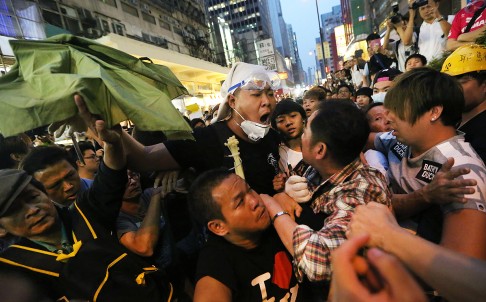
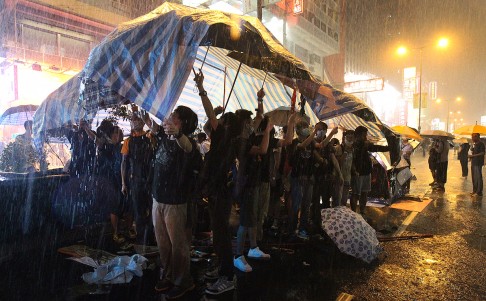
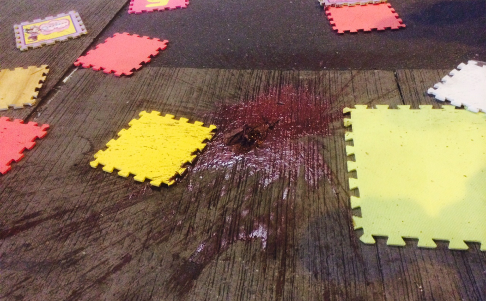
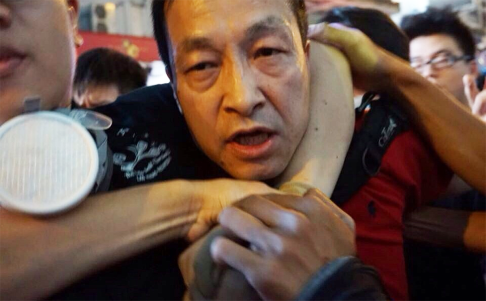
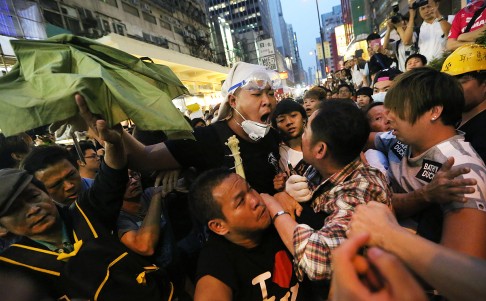
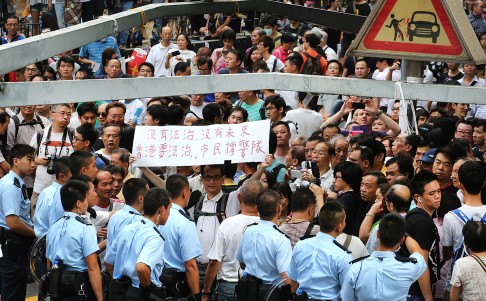
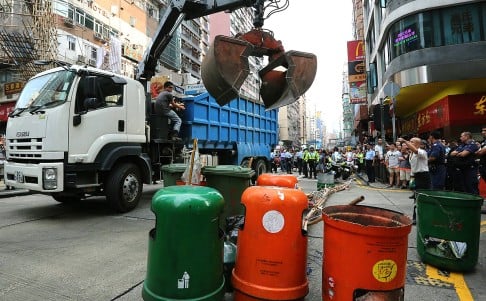
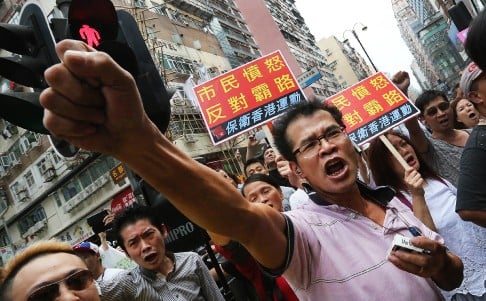
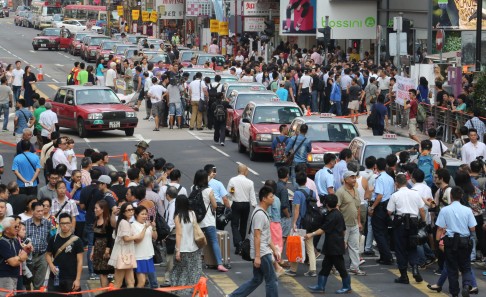
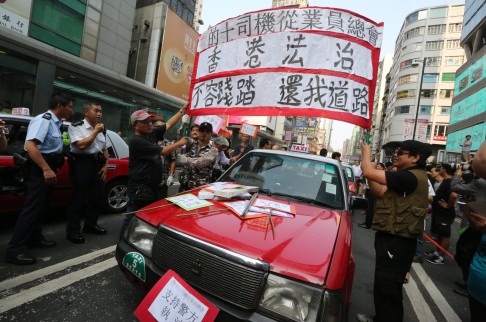
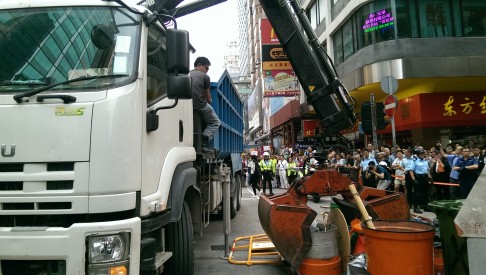
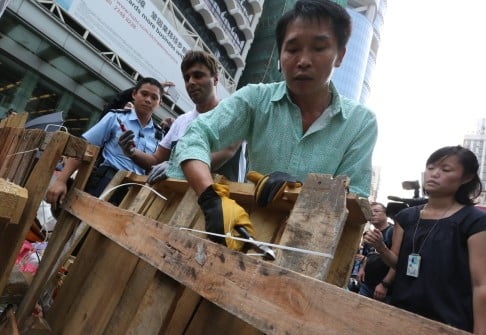
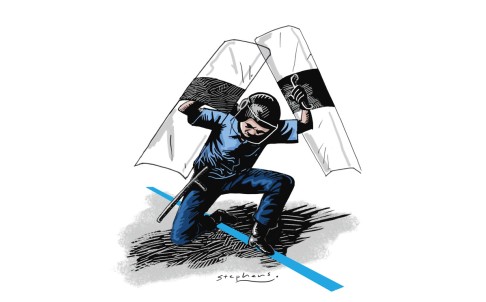
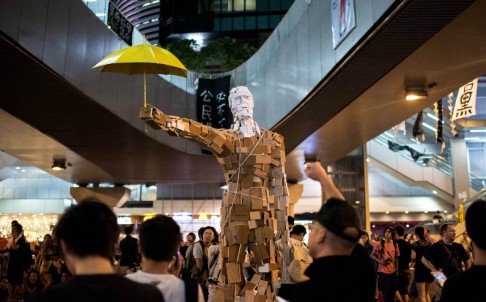
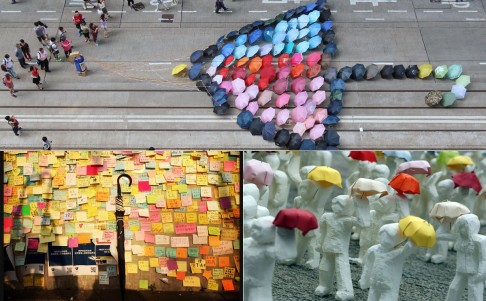
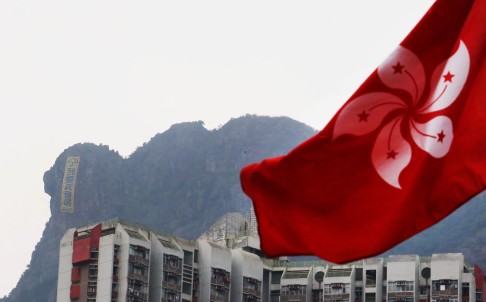

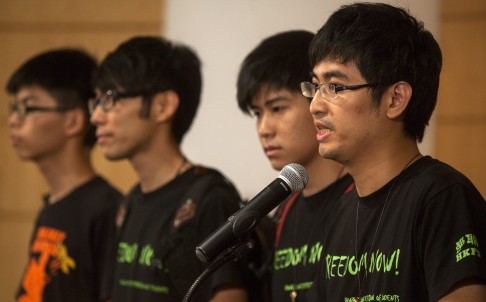
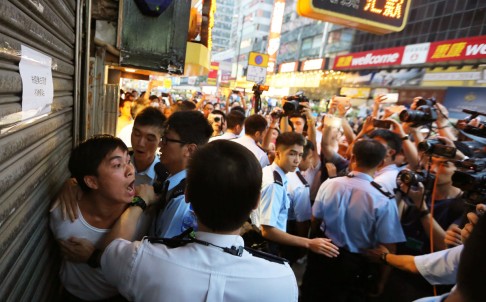
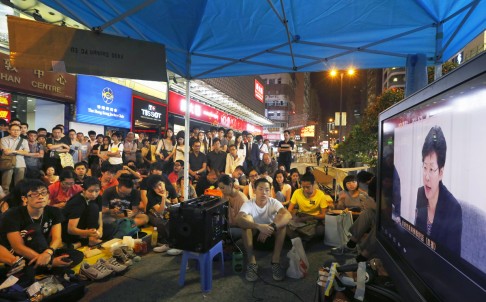
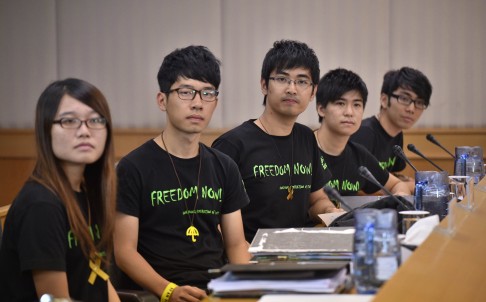
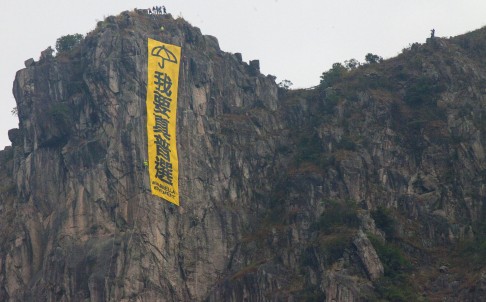


沒有留言:
張貼留言